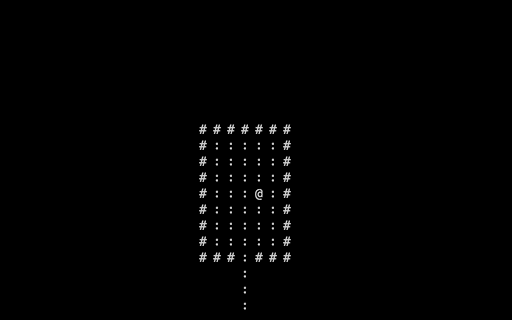Dominion Ecs Java Save
Insanely fast ECS (Entity Component System) for Java
 |) () |\/| | |\| | () |\|
|) () |\/| | |\| | () |\|
Dominion is an Entity Component System library for Java.
Entity Component System (ECS) architecture promotes data-oriented programming. It’s all about data (components) and first-class functions (systems) that operate on data.
This means that, unlike OOP, data and operations are not encapsulated together in objects, which are called entities in ECS.
Entities model the business objects of the user application, and the entity promotes "composition over inheritance" by grouping a dynamic list of components to define its specific features.
Systems usually operate on components sequentially and can be very fast if data are stored in cache-friendly ways. Systems are decoupled from each other and each system knows only about the data it operates on. This strongly promotes high concurrency, running systems in parallel whenever they can independently operate on the data.
ECS architecture is particularly suitable (but not limited to) if you have to manage many objects in your application. In addition, application code tends to be more reusable and easier to extend with new functionality thanks to the components' composition and subsequent addition of new systems.
Dominion Features
- 🚀 FAST > Dominion is not only an insanely fast ECS implemented in Java, it can also be in the same league as ECS for C, C++, and Rust - see benchmarks .
- 🚀🚀 FASTER > Dominion is on average quite faster than other ECS implemented in Java. Check out this performance comparison .
- 🤏 TINY > Just a high-performance and high-concurrency Java library with a minimal footprint and no dependencies. So you can easily integrate the Dominion core library into your game engine or framework or use it directly for your game or application without warring about the dependency hell.
- ☕️ SIMPLE > Dominion promotes a clean, minimal and self-explanatory API that is simple by design. A few readme pages will provide complete usage documentation.
- 💪 with SUPPORT > Join the Discord! The server will support users and announce the availability of the new version.
Archetype Concept
Dominion implements the so-called Archetype concept through the DataComposition class, an aggregation of
component types of which an entity can be made of.
In an ECS, the Archetype is a way to organize and manage entities based on their components. It provides a structured approach for efficiently storing and querying entities with similar component compositions.
In an ECS, entities are composed of various components that define their behavior and characteristics. The Archetype groups entities into archetypes based on their shared component types. An archetype represents a specific combination of component types that entities possess.
The purpose of using archetypes is to optimize entity storage and system processing. Entities within the same archetype
have the same layout of components, which allows for data-oriented design and improves memory locality. This arrangement
enhances cache coherency, enables more efficient processing of system operations, and is primarily handled in Dominion
through the ChunkedPool.Tenant class.
Archetypes also facilitate efficient querying and iteration over entities that match specific component combinations. By organizing entities based on their archetypes, systems can quickly identify and process only the relevant entities that contain the required component types, reducing unnecessary overhead.
When a new entity is created or modified, the ECS manager checks the archetype it belongs to. If an existing archetype matches the component composition, the entity is added to that archetype. Otherwise, a new archetype is created for the entity's unique component combination.
By leveraging the Archetype, Dominion implementations can achieve high performance and scalability by optimizing memory usage, facilitating cache-friendly access patterns, and enabling efficient processing of entities with similar component compositions.
Overall, the Archetype in an Entity Component System provides an effective means of organizing, storing, and processing entities with shared component types, leading to improved performance and flexibility in game development and other related domains.
Struct of Arrays
Dominion implements a specific Struct of Arrays (SoA) layout through the ChunkedPool.LinkedChunk class.
In an ECS, the SoA layout refers to a data organization approach where the components of entities are stored in separate arrays based on their data types. This is in contrast to the traditional approach of storing entities as Arrays of Structs (AoS) where all components of an entity are grouped together in a single struct.
The SoA layout is designed to improve data locality and cache efficiency, which can lead to significant performance benefits in certain scenarios. By storing components of the same data type in contiguous arrays, the SoA layout allows for better memory access patterns, reducing cache misses and improving CPU cache utilization.
For example, let's consider an ECS with three component types: Position, Velocity, and Renderable. In an SoA layout, all Position components would be stored in a separate array, all Velocity components in another array, and so on. Each array would contain the respective component data for the entities.
By leveraging the SoA layout, which stores components of the same data type in contiguous arrays, data can be easily aligned for SIMD operations. This alignment allows SIMD instructions to operate on multiple data elements in parallel, providing significant performance benefits.
Overall, the SoA layout in Dominion provides a way to optimize memory access patterns and improve performance by storing components in separate arrays based on their data types, allowing for efficient batch processing of components by systems.
Quick Start
In your local environment you must have already installed a Java 17 (or newer) and Maven.
Add the following dependency declaration in your project pom.xml:
<dependency>
<groupId>dev.dominion.ecs</groupId>
<artifactId>dominion-ecs-engine</artifactId>
<version>0.9.0</version>
</dependency>
Check out the Dominion API documentation as a reference to get started implementing your first app.
About Performance
Designing a high-performance and high-concurrency Java library is a piece of cake quite a challenge as the execution
speed of Java code could be affected in many ways. Dominion mitigates Java's performance pitfalls by taking a few
actions:
- not just using the standard library: the Java standard library implements data structures and algorithms designed without making any assumption about the data as they are general purpose. Dominion implements some custom data structures and algorithms to increase performances and fill the gap with ECS frameworks written in system languages.
- reducing garbage collection activities: GC could affect overall performances as its activities run concurrently with user code and without direct control. To reduce GC activities significantly, Dominion creates off-heap data structures whenever possible.
- mastering concurrency: an ECS library must be not only fast but able to scale running on a multicore CPU, otherwise, it would make little sense today.
- adding a blazing-fast logging layer: by implementing a thin logging layer over the standard System.Logger (Platform Logging API and Service - JEP 264), Dominion achieves a half nanosecond logging level check with next to no performance impact and does not require a specific dependency on the logging implementation of your choice.
Ok let's start
Here is a first example:
public class HelloDominion {
public static void main(String[] args) {
// creates your world
Dominion hello = Dominion.create();
// creates an entity with components
hello.createEntity(
"my-entity",
new Position(0, 0),
new Velocity(1, 1)
);
// creates a system
Runnable system = () -> {
//finds entities
hello.findEntitiesWith(Position.class, Velocity.class)
// stream the results
.stream().forEach(result -> {
Position position = result.comp1();
Velocity velocity = result.comp2();
position.x += velocity.x;
position.y += velocity.y;
System.out.printf("Entity %s moved with %s to %s\n",
result.entity().getName(), velocity, position);
});
};
// creates a scheduler
Scheduler scheduler = hello.createScheduler();
// schedules the system
scheduler.schedule(system);
// starts 3 ticks per second
scheduler.tickAtFixedRate(3);
}
// component types can be both classes and records
static class Position {
double x, y;
public Position(double x, double y) {/*...*/}
@Override
public String toString() {/*...*/}
}
record Velocity(double x, double y) {
}
}
Dominion Examples Page
Dominion comes with some documented sample apps to help adopt the solution, like the HelloDominion sample above.
The DarkEntities sample app has also been added, it could inspire a turn-based rogue-like game running on a terminal window:

Here the Dominion Examples page with all the documented code.
Join the Discord for further updates!
Credits
Support Dominion
If you want to support Dominion project, consider giving it a Star ⭐️

